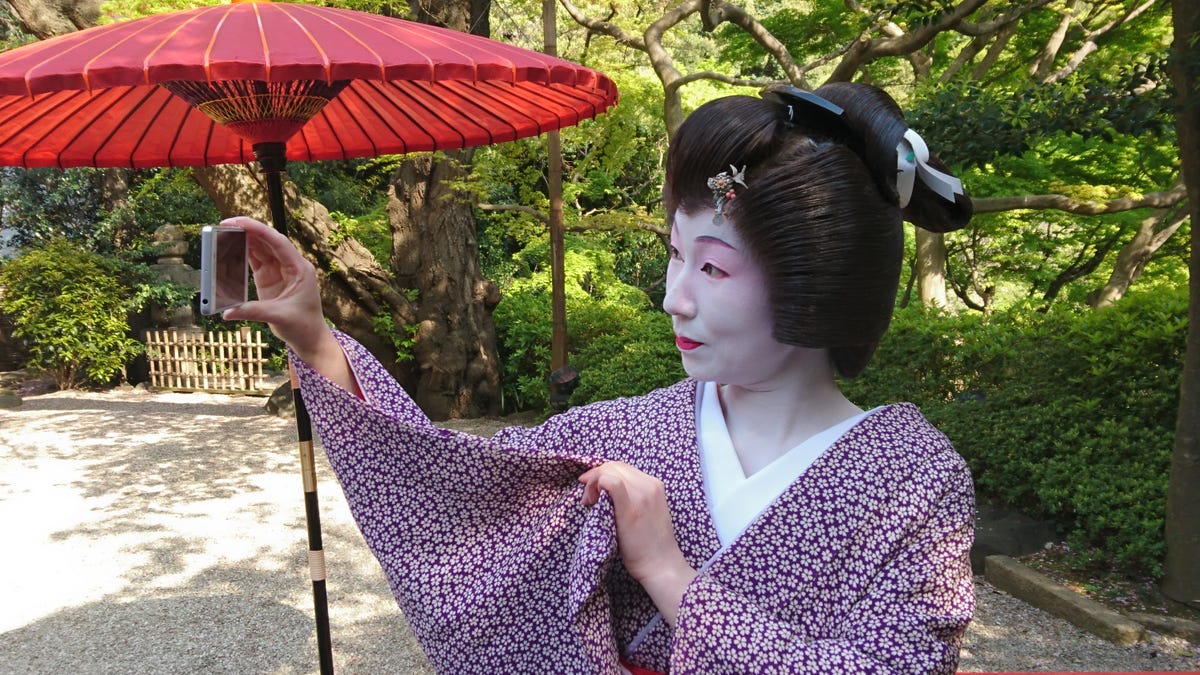Sony Xperia X's camera jumps ahead of the game with fast start and predictive tricks
CNET takes an early look at the 23-megapixel camera on Sony's latest phone in Japan.

Sony's camera sensors are found not just in its own phones, but also in those made by its rivals across the industry, including the likes of Apple and Huawei. But if Sony does build some of the best mobile camera tech, making remarkable advancements in downsizing sensors without affecting their quality, why aren't its own smartphone cameras the best in the industry?
It's a question Sony has clearly been asking itself too, as the main focus of the new Xperia X, announced in February at Mobile World Congress, is its skill in the camera department.
The Xperia X has not yet been released and final review devices are yet to be distributed, but using a preproduction sample I participated in a number of workshops to discover more about the updated camera. I also took it for a spin around a beautiful Japanese garden in Tokyo to get an idea what it was like to use on the move.
Being a preproduction sample, the software was still very glitchy and the camera stopped working multiple times, especially when I was trying out one of its hero features: predictive object tracking at 20 megapixels. Until we review the on-sale version of the phone, it's impossible to say whether this is a problem you'll face.
Anticipating the subject's next move
Using the predictive autofocus feature was an awful lot of fun. It's been designed to solve a problem that many smartphone manufacturers still have not mastered: how to capture a moving object in focus with no blur.
Usually there's a perceptible delay between the lens focusing on the object you're shooting and the shutter actually clicking. One solution Sony has developed to effectively eliminate this is to observe the path of the moving subject and guess where it will be by the time the shutter goes.
To use the feature you must tap on the object you want to photograph, which is visibly tracked by a yellow box that dances across the screen as the object moves. Once locked on, the tracking seemed to work well. The images I captured of a dancing geisha all came out very clearly.
Software worthy of Sony sensors
In general I was impressed with all of the photos I took using the 23-megapixel camera on the Xperia X, and had particular fun when using it to capture close-up macro shots. The only thing it struggled with was capturing details in brightly lit backgrounds. The sensor should be ideal for capturing high detail and fine texture, but will probably not match up to the Samsung Galaxy S7 or iPhone 6S when it comes to its HDR capabilities.
Having a great image sensor on a phone is one thing, but the software laid on top can completely change the experience of using its camera. There are multiple steps in what Sony calls its "capture sequence", which means everything from initialising the camera to moving the shutter to processing the image.
For the X, Sony has started afresh, throwing out every step of the sequence used in the Z5. It's effectively simplified and compressed the sequence to make the experience of using the camera much snappier. Now with one long press of the dedicated camera button, you can start up the camera app and take a photo almost instantaneously, making it ideal for capturing those spontaneous moments involving kids and pets.
It didn't work every time when I tried it, but when it did it worked well and managed to snap images I presumed it had missed. When CNET reviews the phone in full we'll be looking to see if Sony can make this feature consistent and reliable.
As it's all based on software, Sony's fast camera feature could potentially also be delivered to older flagship phones via an update, the company's engineers confirmed in a briefing. But there are no plans for this to happen anytime soon. Annoying for Z5 owners, but not surprising -- Sony will want to give people reasons to buy its new phone after all.
Selfies are serious business
The front-facing camera on the X has also been given a do-over. The resolution has been bumped up to 13 megapixels and the f2.0 image sensor is 2.6 times larger than the one on the Z5 Premium. In bright daylight this means a much finer texture, showing your pores more crisply and clearly than ever. Fortunately, if the level of detail becomes too much when taking selfies, you can always use Sony's skin-smoothing feature to mask an uneven complexion.
Fortunately, Sony listened to our criticisms about the front-facing counterpart on the Z5 Premium by getting rid of image noise in low-light scenarios. Automatically detecting a low-light scene, the camera will now capture six frames and pile them together to cut out noise. Testing the front-facing camera in low light it was indeed possible to see how fuzz-free the shot was, especially in the background, when compared with a shot captured by the iPhone 6S Plus.
The tech Sony has packed into the Xperia X cameras gives the phone a competitive edge and a great chance of giving the best smartphone snappers a run for their money. I'm looking forward to seeing how it will perform in our full review once Sony has ironed out all those software kinks, which for now are keeping it from showing its true potential.

